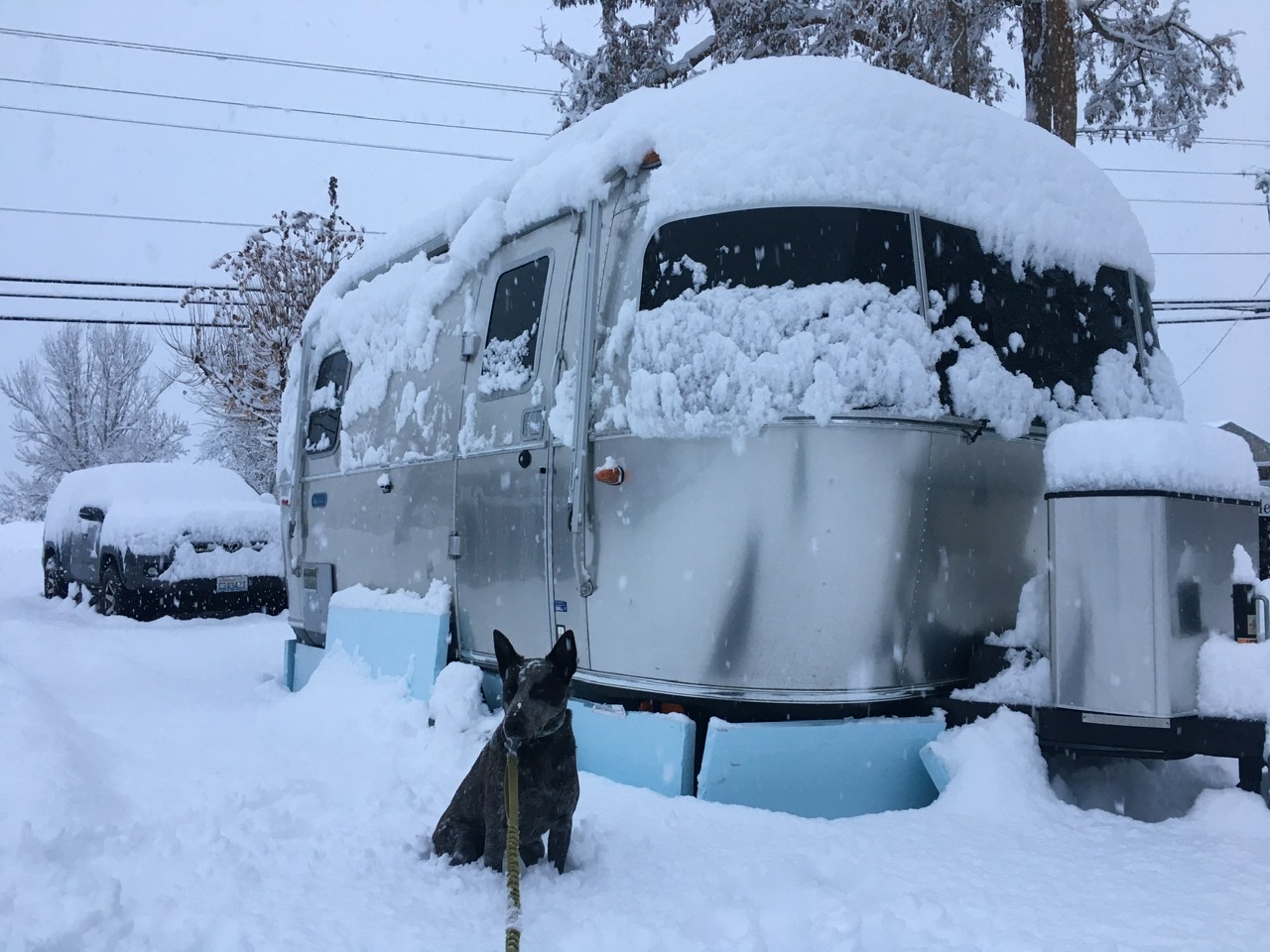I had high hopes of surviving my first full winter completely off-grid on my land in my Airstream. But after enough winters in the Methow, I knew the odds weren’t exactly in my favor.
So far, aside from some early wind and weather challenges, things had been going surprisingly well. Late fall had been mild, and off-grid life felt manageable. But I knew it was only a matter of time before winter showed her true colors.
And sure enough, by mid-December, a near week of subfreezing weather came knocking—with it, a whole new set of challenges. Temperatures eventually rebounded into the 40s for a brief moment, but the forecast for Christmas week and beyond didn’t look promising: freezing rain, several inches of snow, and sustained deep freezes.
I knew I couldn’t simply outpower winter with my two little 12V Interstate batteries. The time had come to face reality and say goodbye to my land for the season.
Making the Move
Last Saturday, I took advantage of clear roads, reluctantly packed up, and rolled into the cozy Pine Near RV Park in Winthrop, trading my off-grid homestead for the luxury of full hookups. I’d spent plenty of time here over the years and had already talked to the friendly owner. She knew I’d eventually roll in.
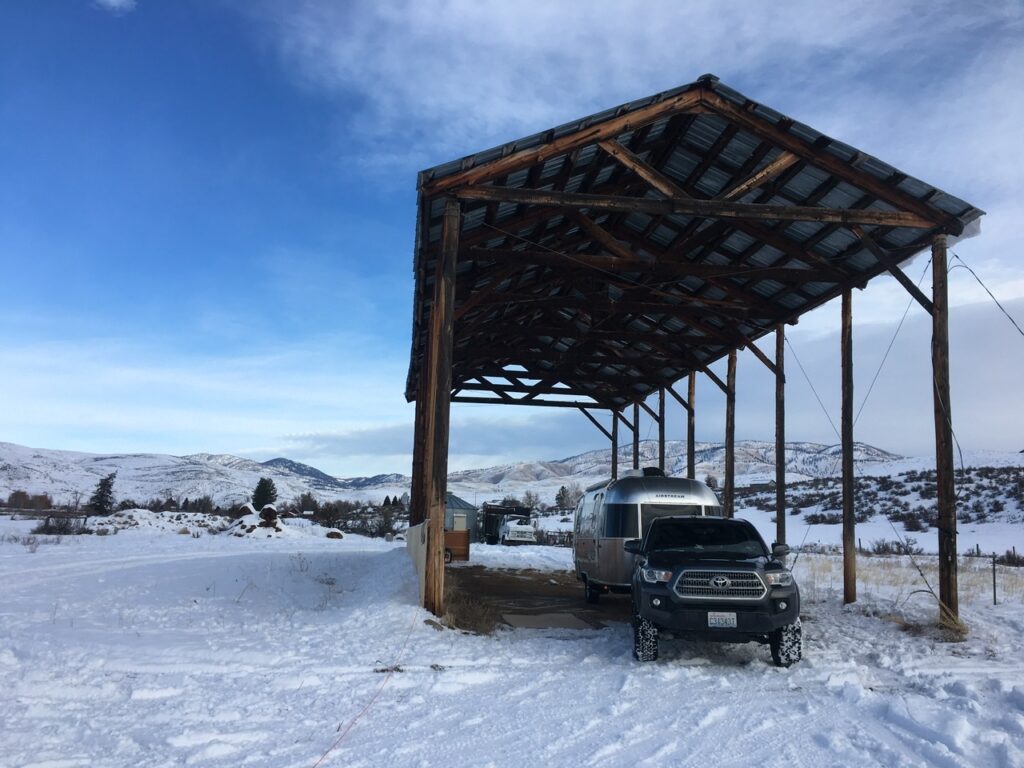
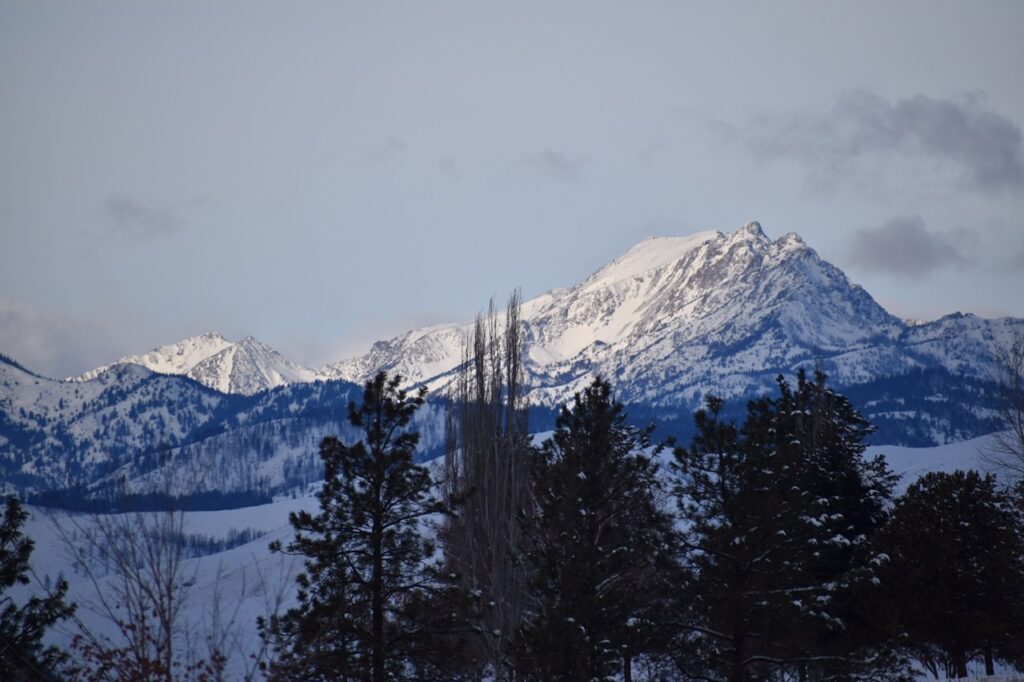
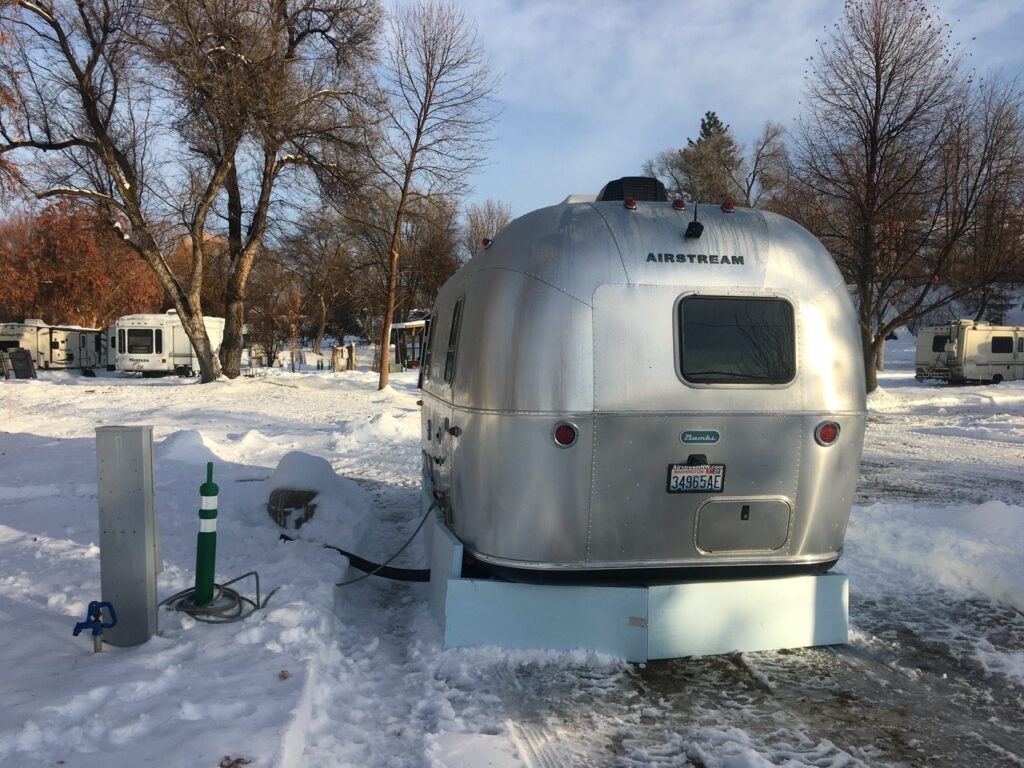
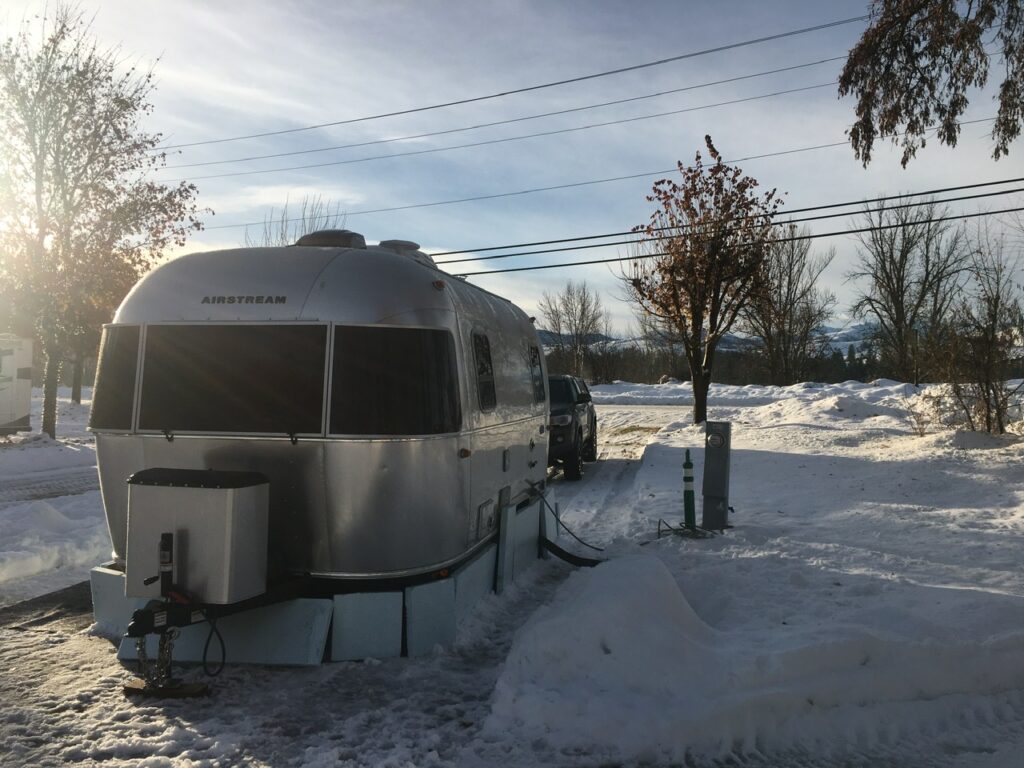
Let me tell you, pulling into a site with 30 amps of power, unlimited water, and a septic hookup? It felt like five-star living. The furnace was cranked, I could take actual hot Airstream showers again, and there was no more power rationing.
Winter was about to hit hard, and as much as I hated leaving my land, I knew I had made the right call.
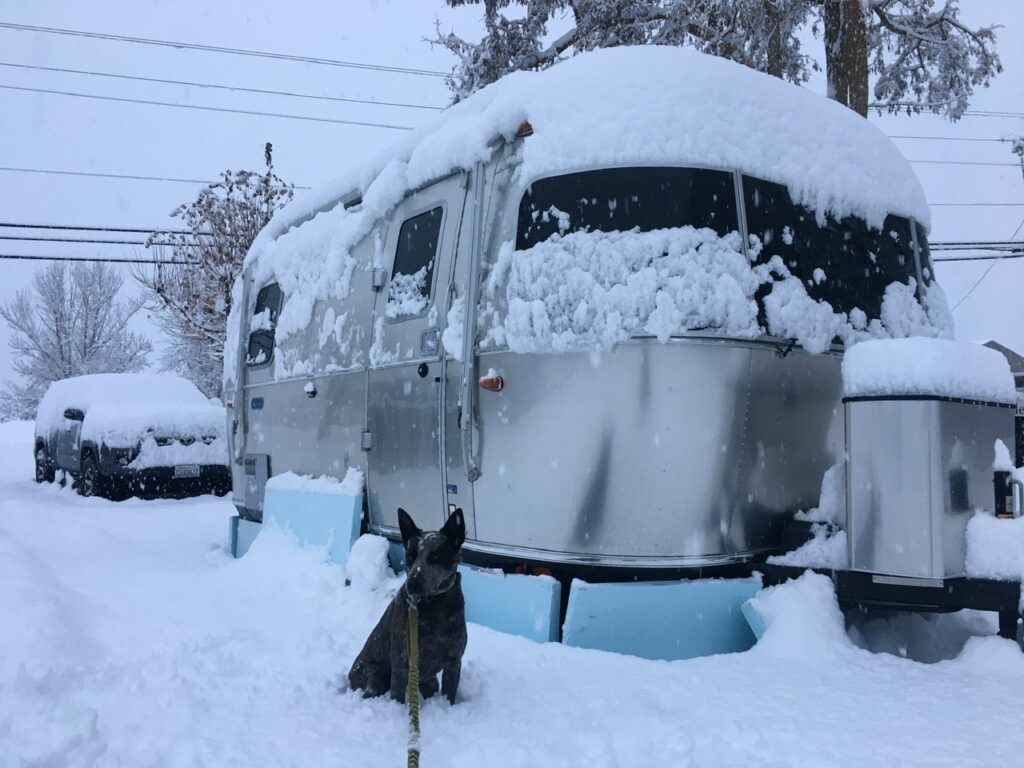
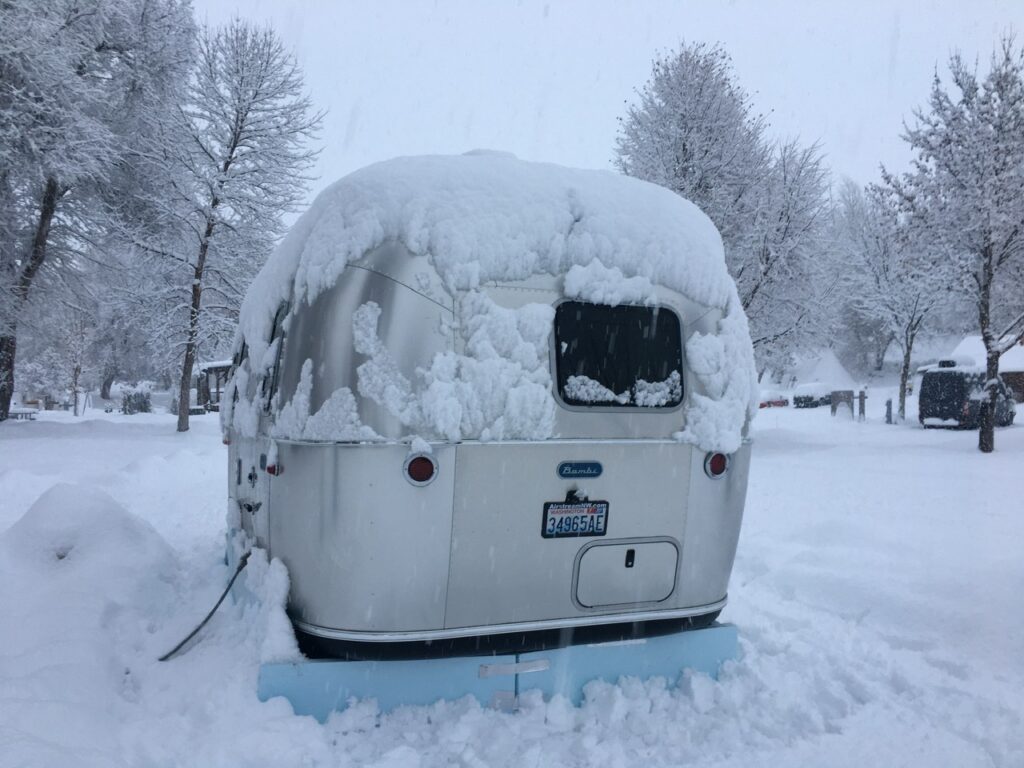
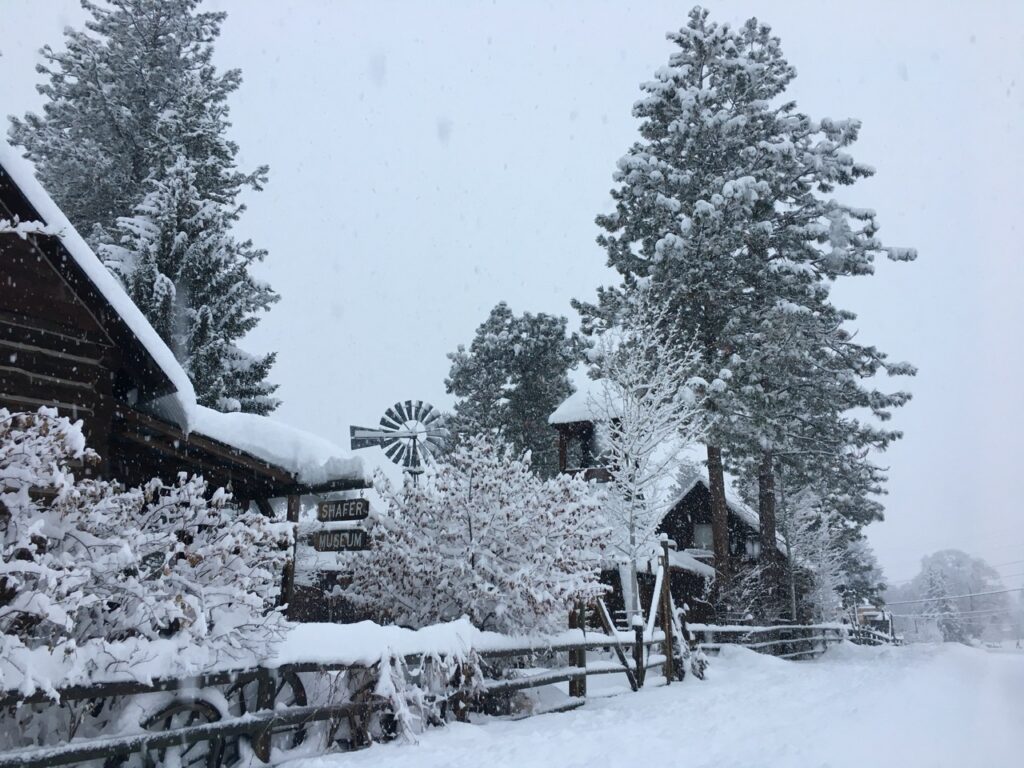
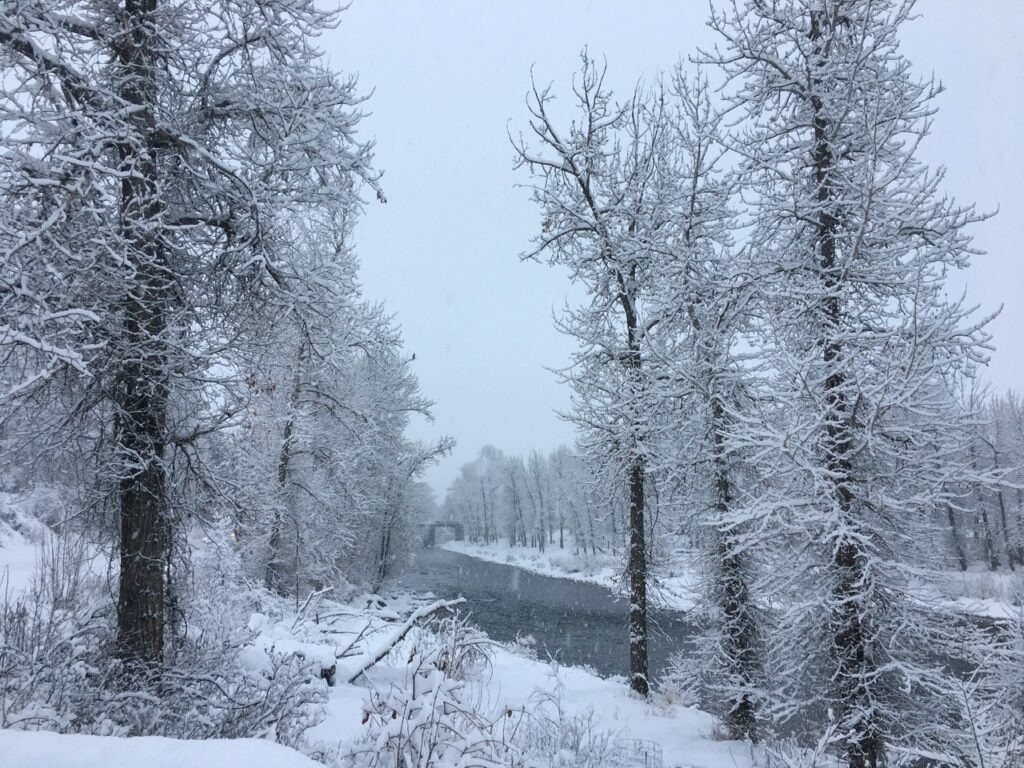
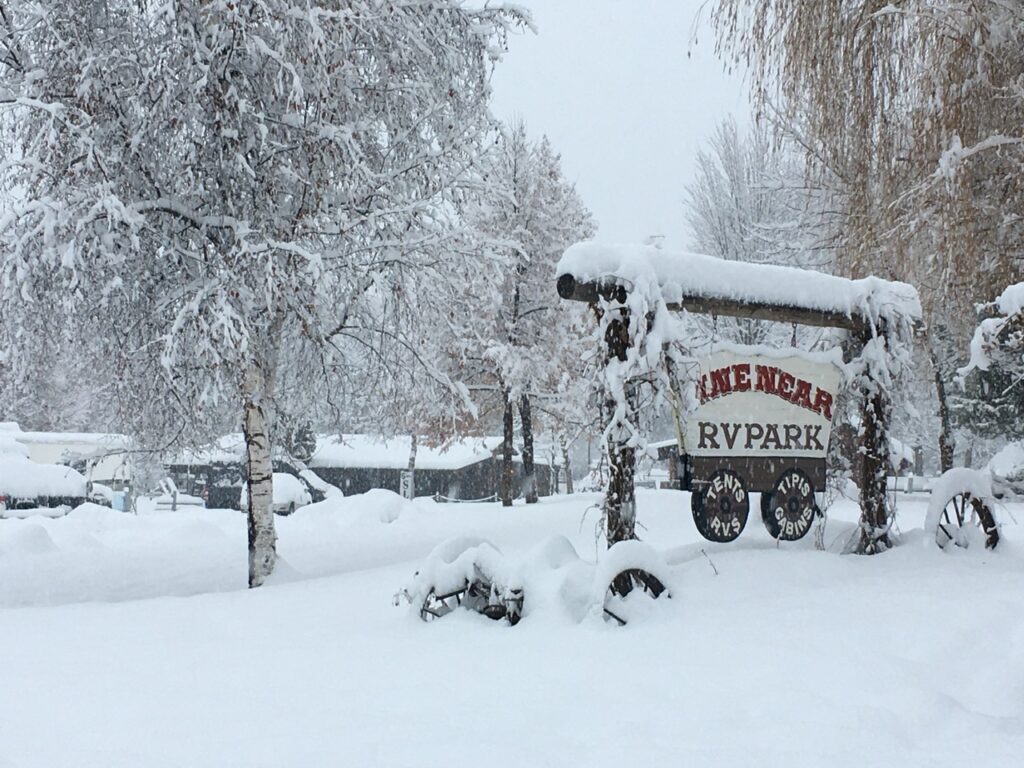
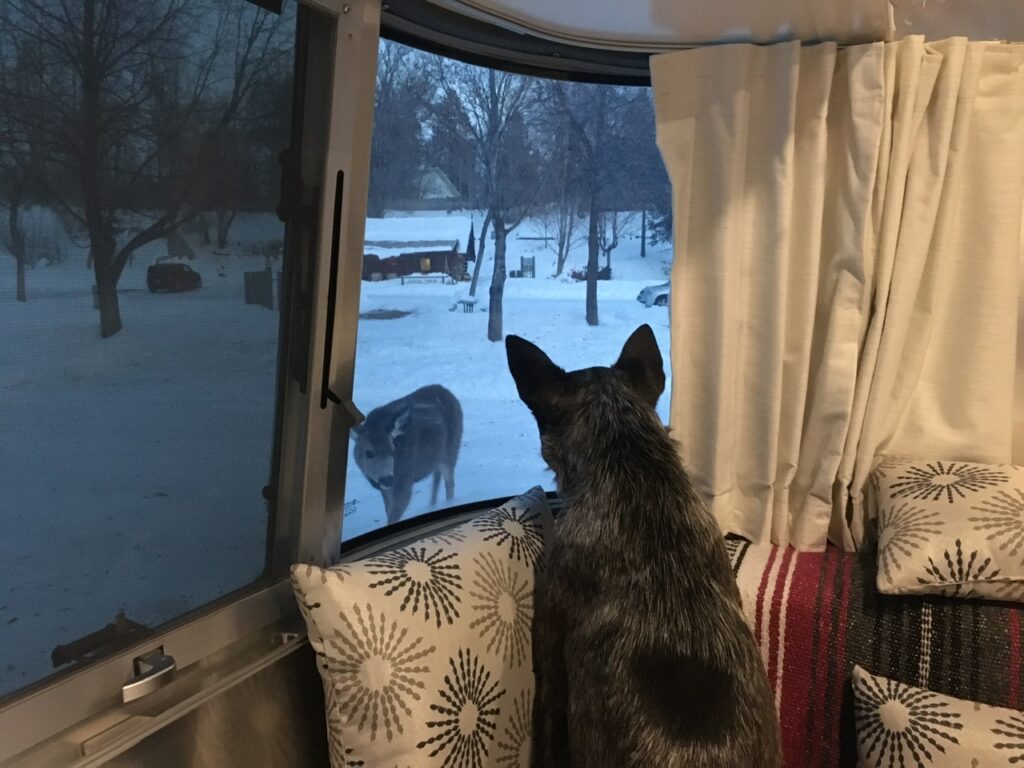
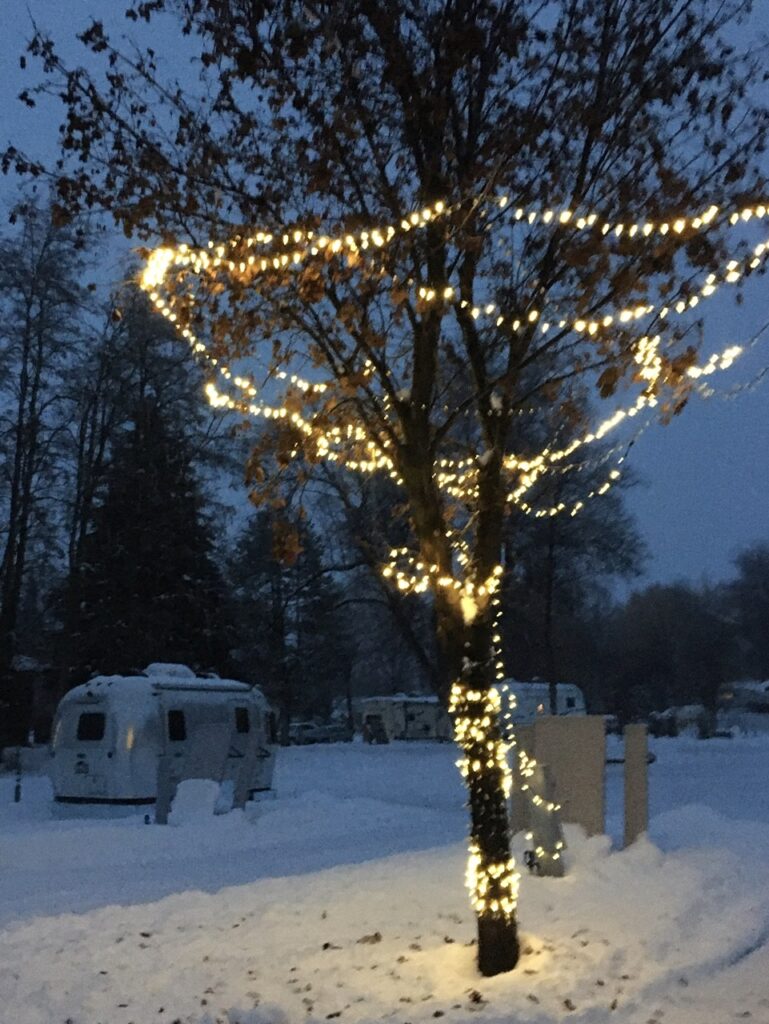
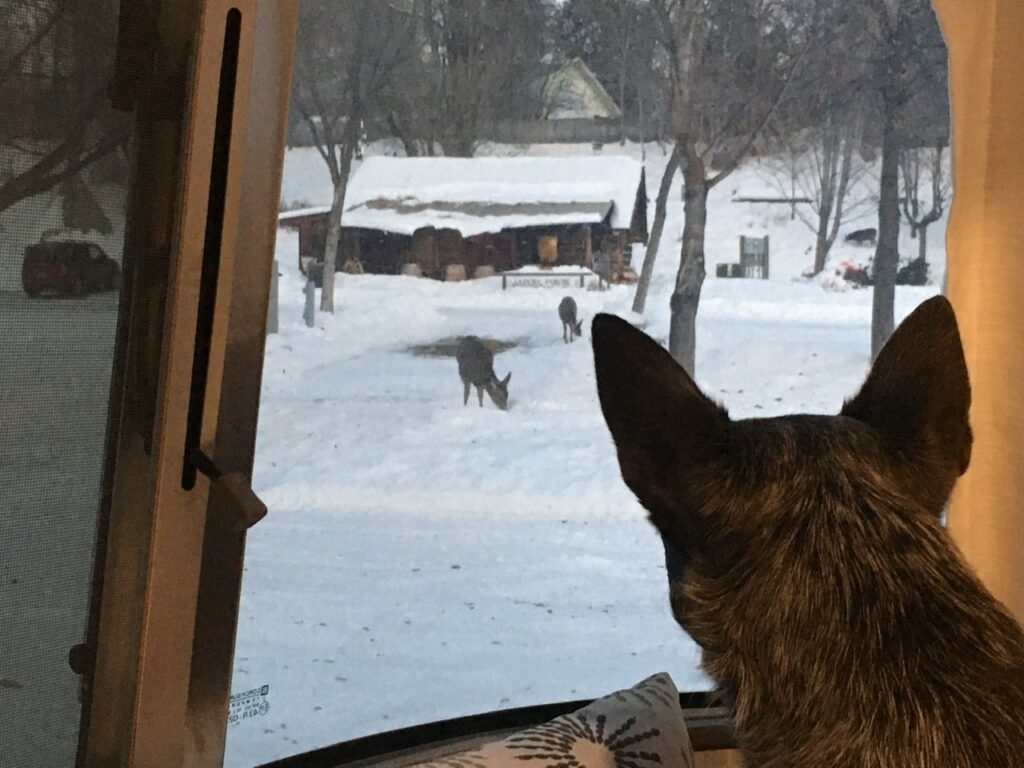
Exploding Water, Bigfoot Panic, and Frozen Septic Valves
Now, let’s rewind a bit to some of the more entertaining moments from my last two weeks of off-grid living, featuring frozen water, septic system nightmares, and even a well-drilling disaster.
6-Gallon Ice Cubes & a Midnight Explosion
Keeping my Airstream’s onboard freshwater tank from freezing had been easy enough, thanks to the ducted furnace. My external water stockpile? Not so much.
One particularly cold night in early December, I went to grab two six-gallon water containers from my grain silo, only to find them frozen solid. Actually, all 50 gallons of my stockpiled water had turned into ice.
Doh.
I figured they’d thaw in the sun, so I set them out beside the Airstream. Great plan! Until I completely forgot about them overnight.
Sometime around 3 a.m., I was jolted awake by a loud BANG. Even Hudson jumped up, barking. It sounded like something had slammed into the side of the Airstream.
Half asleep and mid-panic, I assumed the worst. Maybe I had burst a pipe? Maybe something even worse? I should also mention that I was in the middle of reading Devolution by Max Brooks, a horror novel about Bigfoot massacres. There was no way in hell I was going outside to investigate in single-digit temps after that.
Morning came, and I finally ventured out to assess the damage. Turns out, one of my six-gallon water containers had ruptured from the expanding ice and launched itself into the Airstream, leaving Bambi with her first little dent.
I was relieved it wasn’t a Bigfoot attack.
Lesson learned: no more stockpiling water in the winter.
Frozen Septic Valves & The Poopsicle Incident
Winter RVing introduces you to fun new experiences like frozen dump valves.
While living on my land, I had a local septic company service my tanks every two weeks. The thing is, they were never really full at two weeks, so in early December, I decided to push it to three. Besides, I figured fuller tanks were less likely to freeze.
This was a terrible idea.
Two days before the septic company was due, both my gray and black tanks hit 100% capacity.
Figuring out how far you can push full RV tanks is like playing chicken with your car’s gas light except in this case, running out of “room” is way worse.
The septic company finally arrived while I was out, but when I checked my voicemail, I had this message:
“Hey! Our guys stopped by, but they couldn’t get your dump valves open. I think they’re frozen. Hope your tanks aren’t frozen too!”
Oh. Shit.
Oh. Frozen shit.
Was my black tank a gigantic poopsicle?
They advised me to pour hot water into the tanks and put a heater near the valves but there was a slight problem. My tanks were completely full. There was no room to add anything.
I spent the next few hours spiraling, wondering if I had just sentenced myself to months of frozen, unusable tanks. Would I have to wait until spring to empty them!?
Cue emergency trip to town for a $20 hairdryer. Armed with that and my propane heater, I went to battle with the dump valves.
Luckily, it was only the valves that had frozen, not the tanks. They thawed quickly, the septic company drained them, and I vowed never again to let them hit 100% in winter.
Lesson learned: full tanks may help prevent freezing. But not too full.
Diminished Battery Capacity: The Cold, Hard Truth
It’s kind of amazing, if you ask me, that I managed to live mostly off-grid in my Airstream since late August using nothing but two stock 12V Interstate Marine batteries.
Everyone, and I mean everyone, told me to upgrade to lithium, AGM, or 6V golf cart batteries. If there’s one thing I’ve learned about RV life, it’s that people love giving advice. But very few have actually lived in winter conditions. Very few.
I held off on upgrading because I wanted to fully understand my power needs before making an expensive decision. Stock batteries are easy to find, cheap to replace, and I figured they’d be a good learning experience. And learn, I did! Especially about how brutal cold weather can be on batteries. Here’s what I found:
Cold Weather & Freezing
- Fully charged lead-acid batteries won’t freeze until around -100°F, but if they’re only half charged, they can freeze at just -10°F and once they freeze, they’re toast.
- AGM batteries are a bit more resilient but still susceptible to freezing.
Cold Weather & Capacity Loss
- All lead-acid batteries lose capacity in freezing temperatures—up to 50% at 0°F. That includes AGM batteries.
- Since the golden rule is to avoid discharging below 50%, that means your usable power in cold weather is severely limited.
The Lithium Catch
- Lithium batteries are expensive and perform far better in cold weather except for one big issue: they must be stored above freezing.
- Charging a lithium battery in sub-freezing temps can permanently damage it, which is a costly mistake.
Battery Heaters: The Catch-22
- Battery heaters can help prevent freezing, but they require power.
- If you’re boondocking in freezing temps, power is exactly what you don’t have an abundance of.
With my batteries mounted on the tongue of my Airstream, even insulated, they were still exposed to the elements. Once subfreezing weather set in for days on end, I saw a major drop in performance.
Previously, I could keep my furnace running intermittently for 12-13 hours while keeping my battery charge above 70%. But as temperatures plummeted, I struggled to run the furnace from 10 p.m. to 6 a.m. without my batteries dipping below 50%. My solar charge controller showed that my usable amps had dropped from 50-60 down to 20-25. It was a massive hit.
I considered adding two more batteries for extra capacity, but at this point, it felt like a game of diminishing returns. Between battling freezing water, frozen septic valves, and fading battery power, I knew it was time to call it.
Winter had won this round.
The Well-Drilling Disaster
Since June, I had been in contact with a well-drilling company, hoping to get a water well on my land before winter. After months of delays, they finally called the day before I left for Winthrop.
“We’re bringing the rig out today! Maybe you’ll have your well for Christmas!”
I was ecstatic! Until two hours later, when I got another call.
They had crashed their drilling rig off the side of a mountain.
Luckily, no one was hurt but my well definitely wasn’t happening anytime soon. If that doesn’t sum up my land development progress, I don’t know what does.
But hey! At least I’ve got unlimited water at the RV park now.
Final Thoughts: A Winter Reset
With my off-grid winter adventure officially on pause, Hudson and I have been enjoying the luxuries of full hookups, hot showers, and stress-free living.
Sure, I’ll be back on my land as soon as spring allows but for now? I’m soaking in the warmth, power, and glorious indoor plumbing.
Winter had the last word—for now.
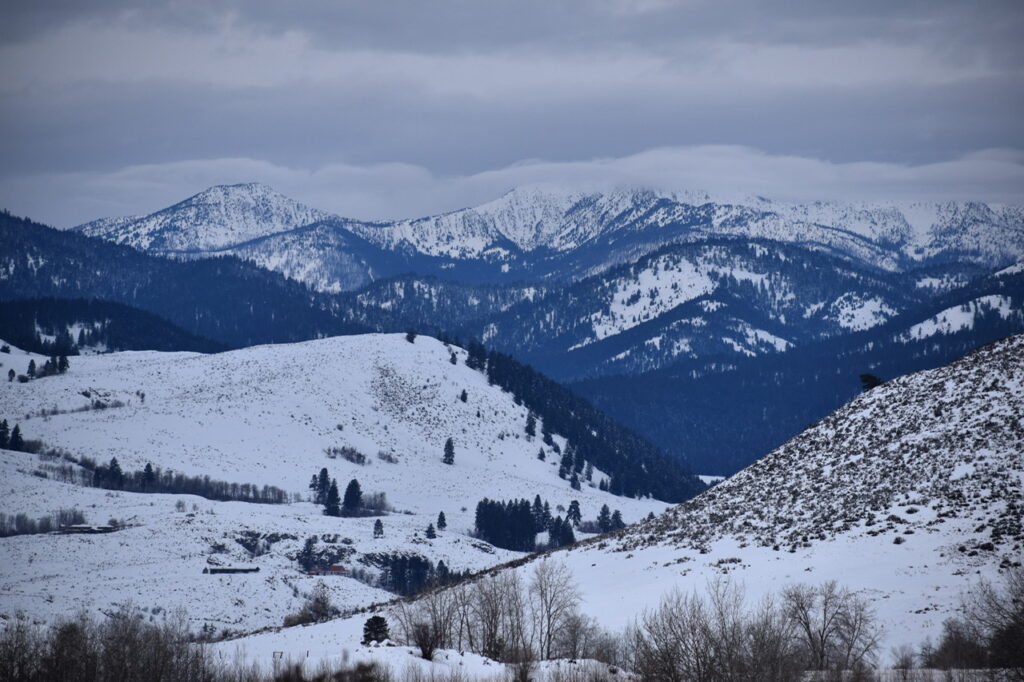
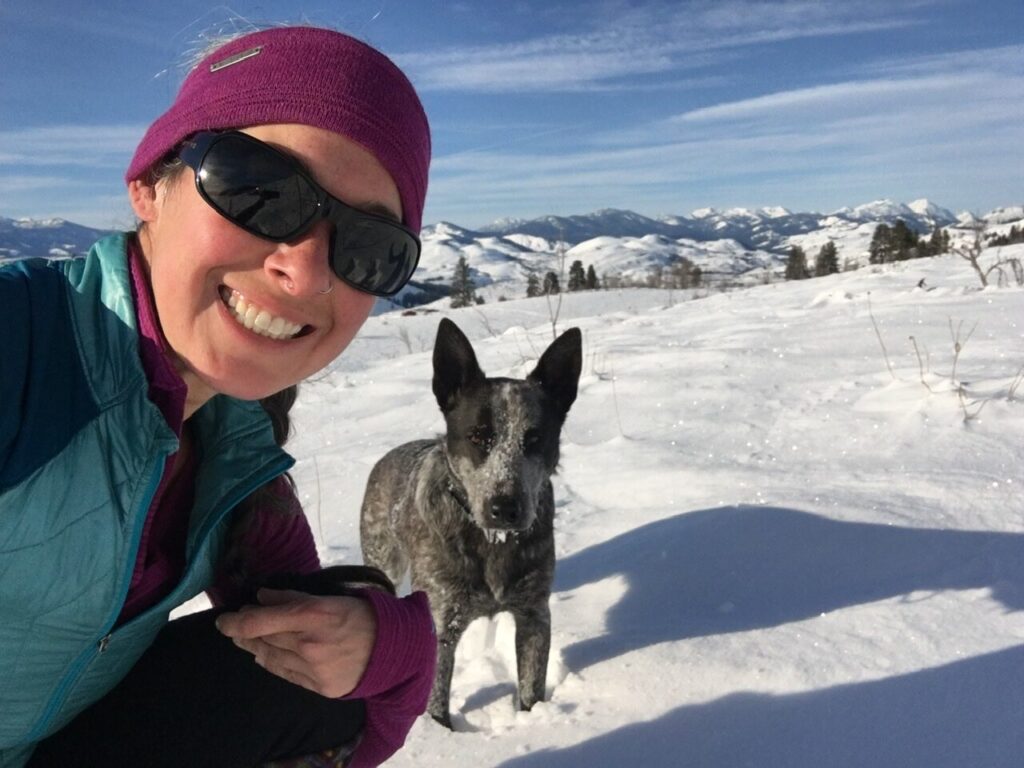
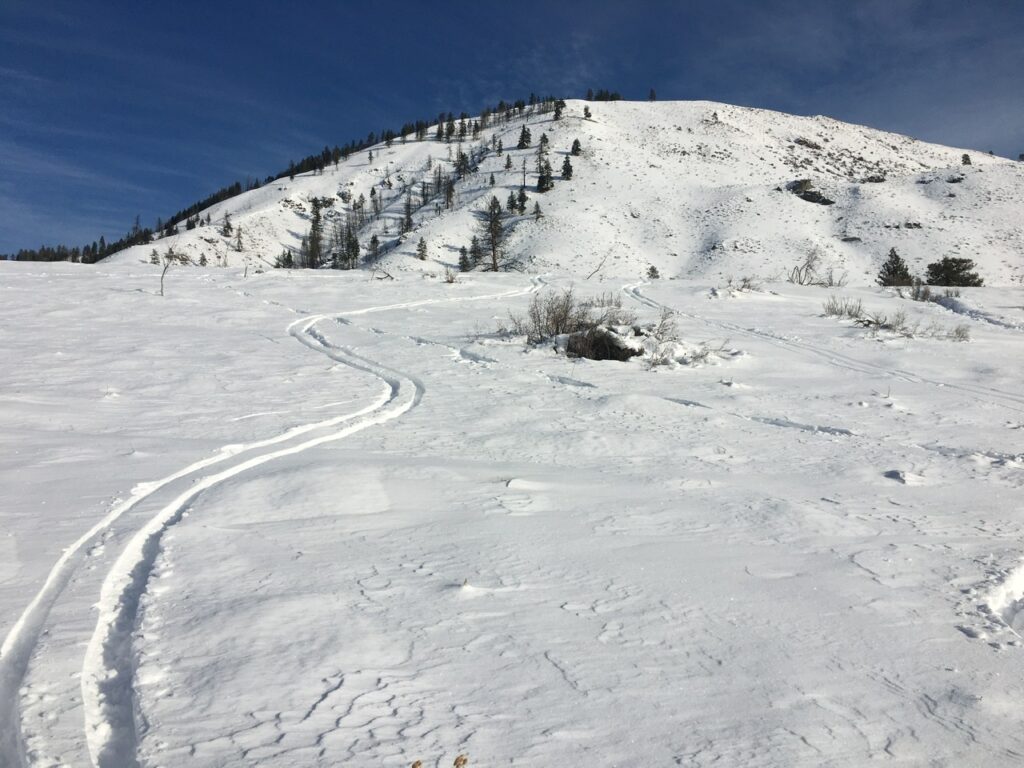
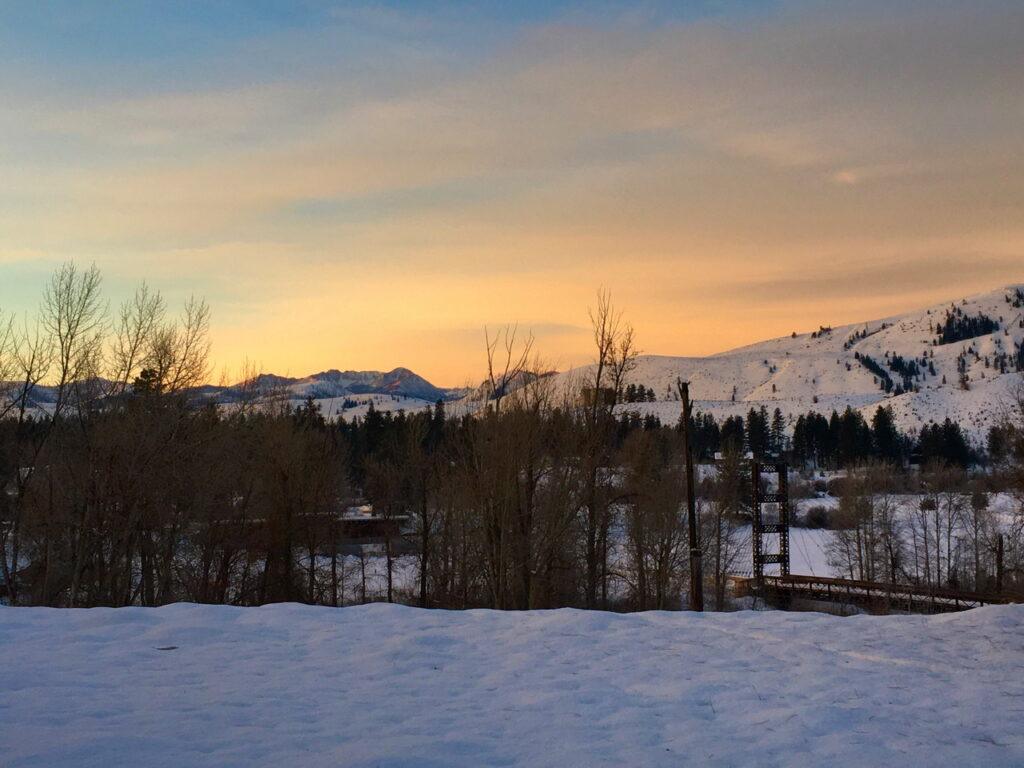
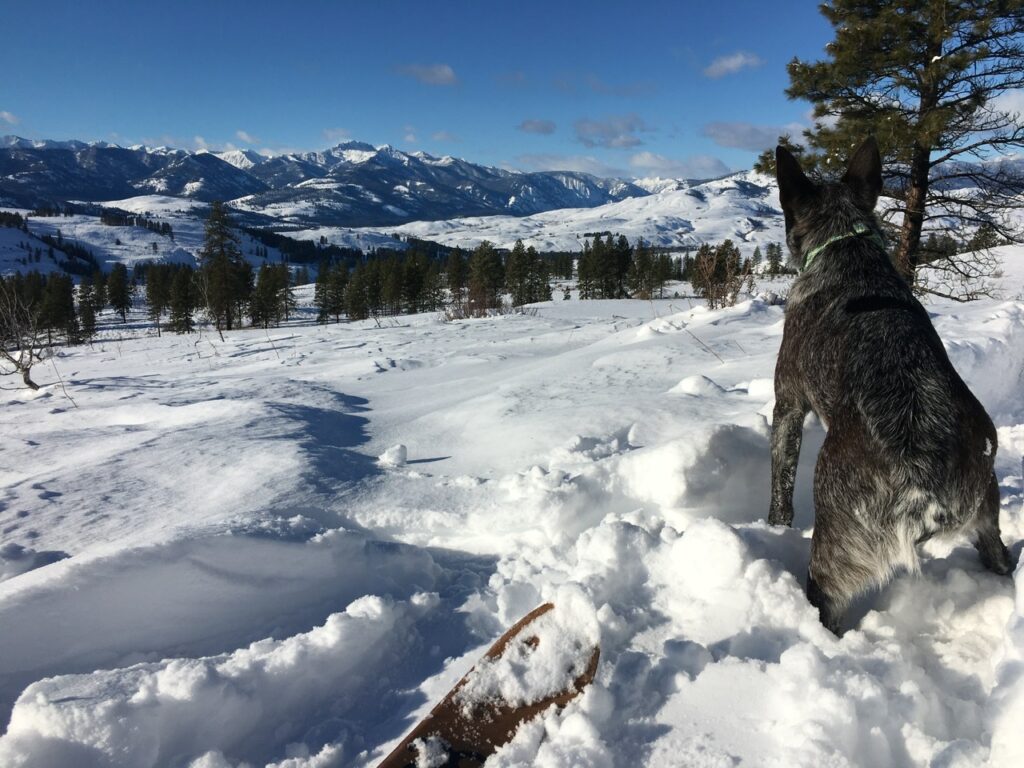

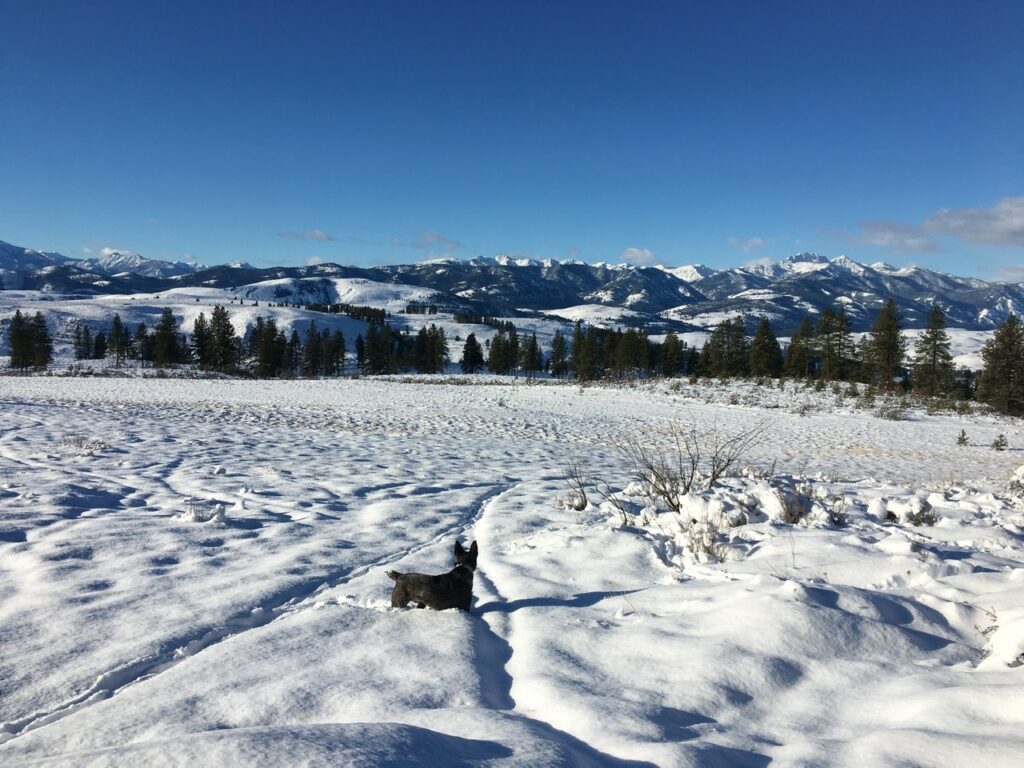
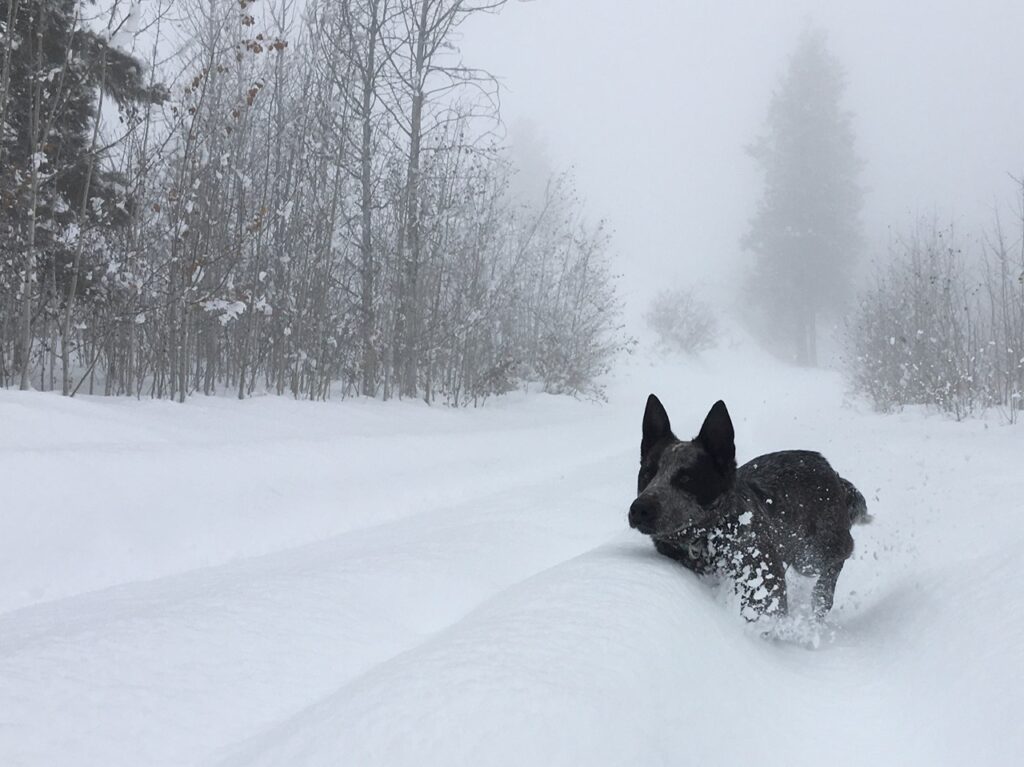
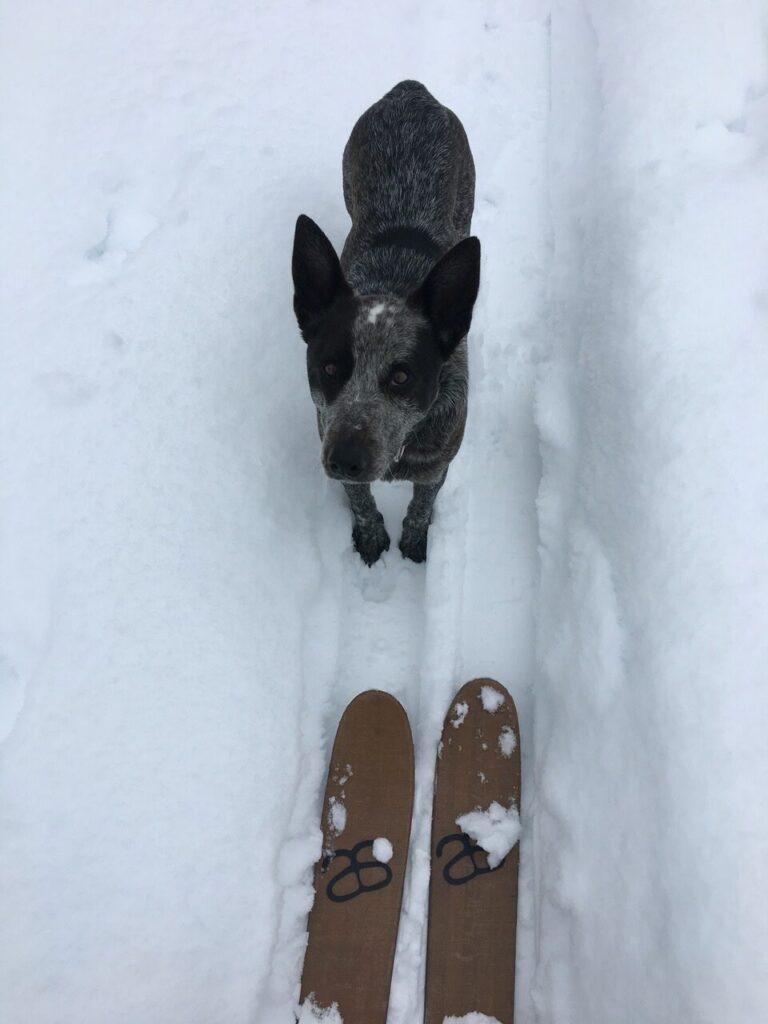
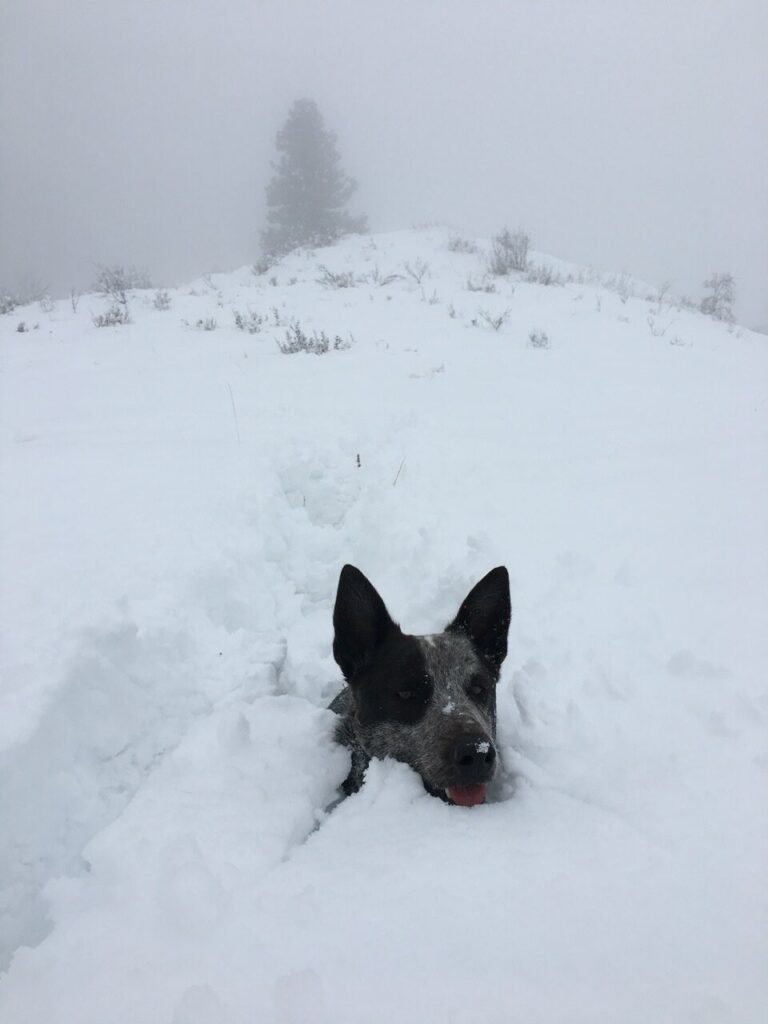
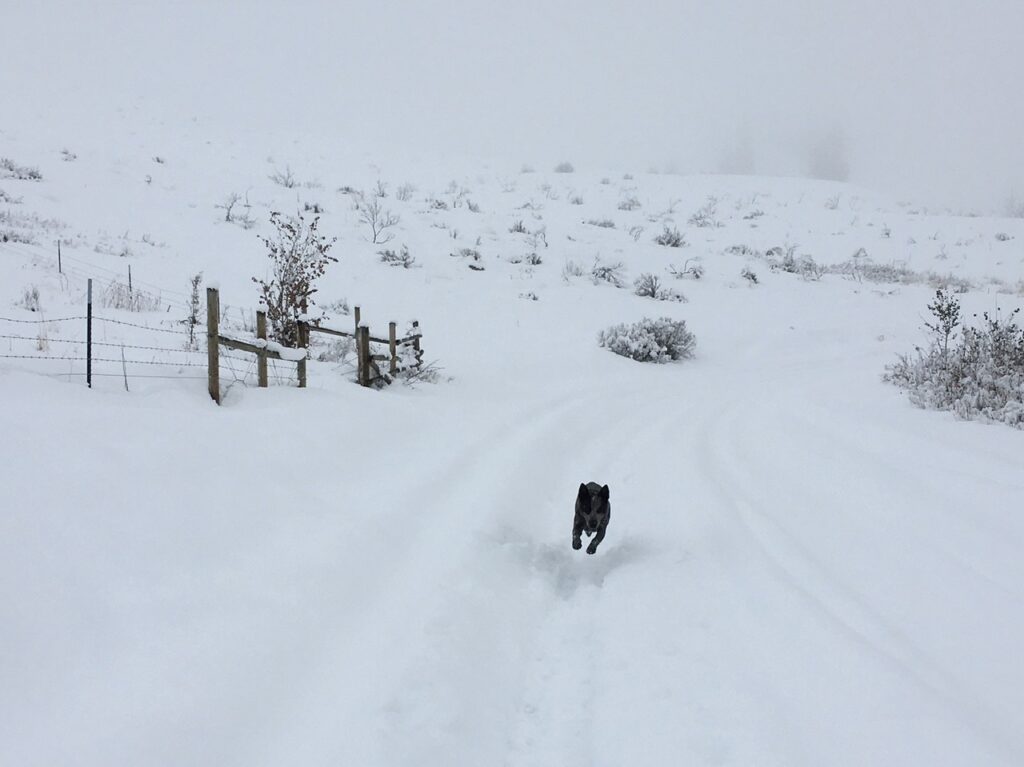
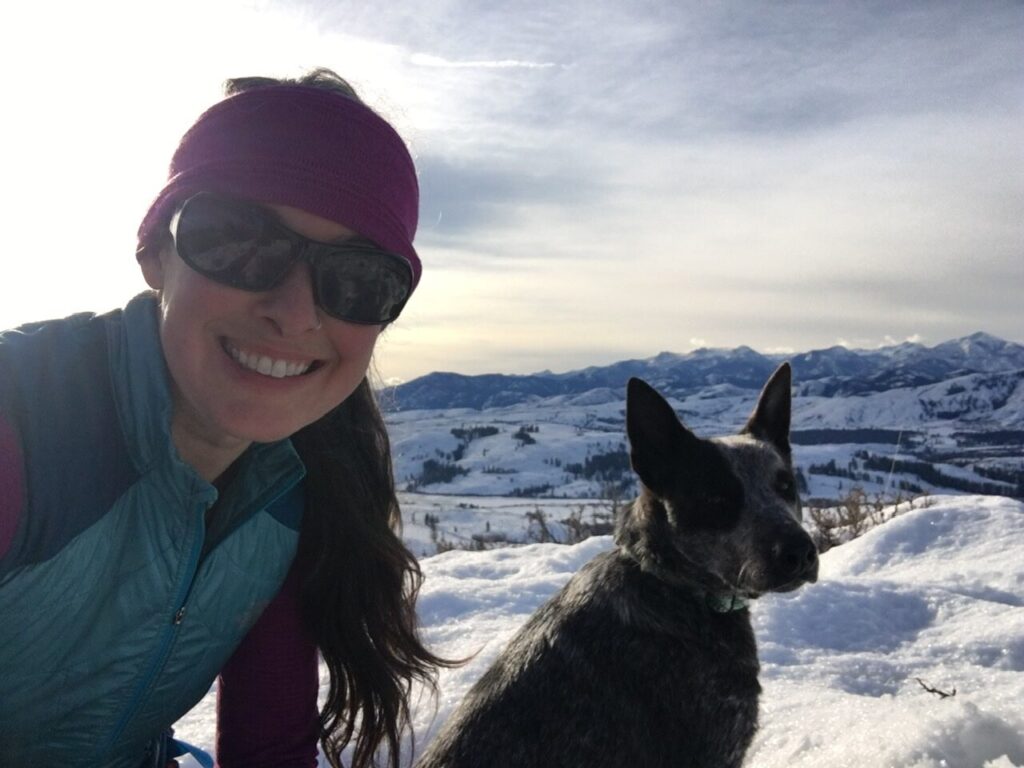
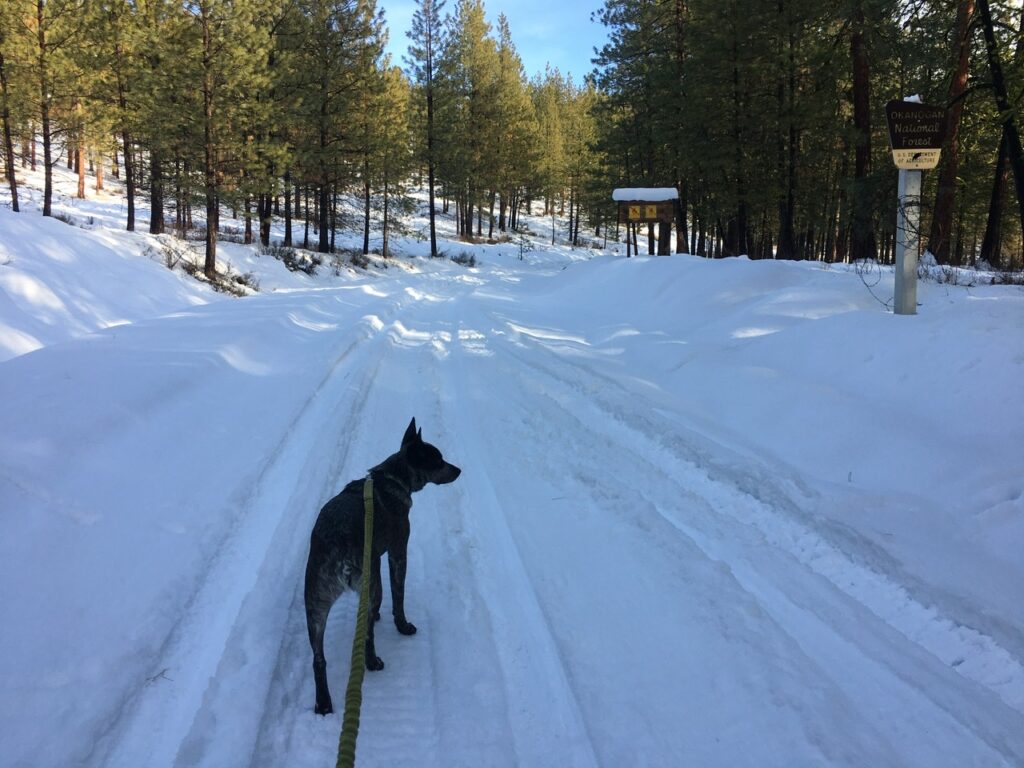
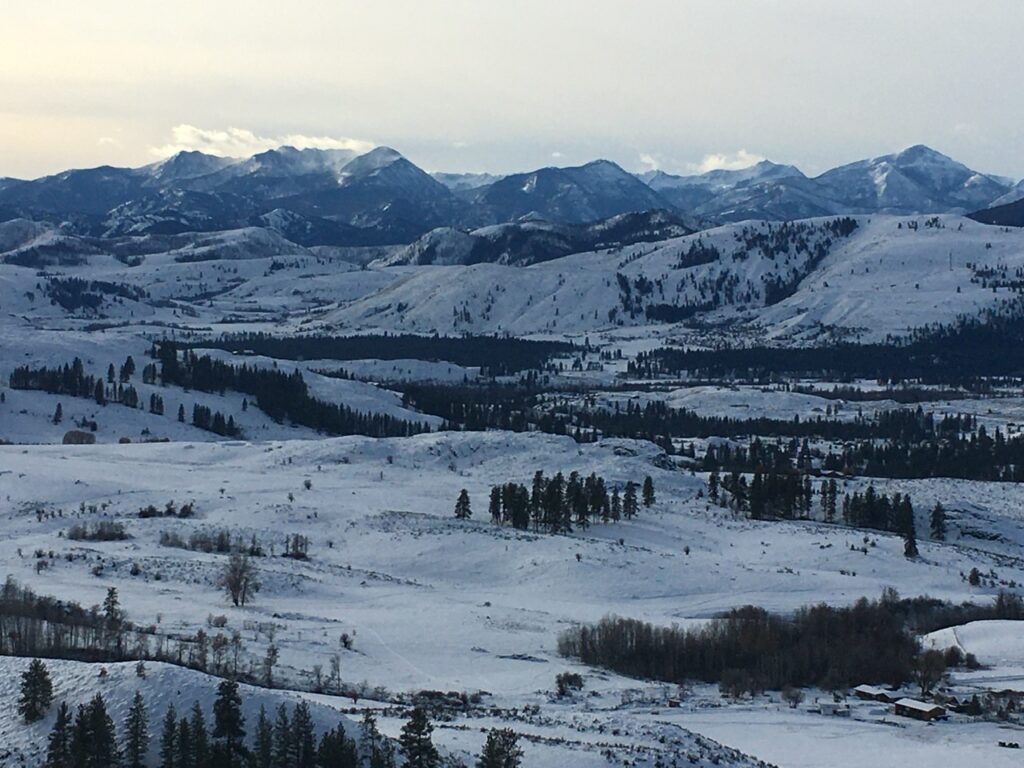
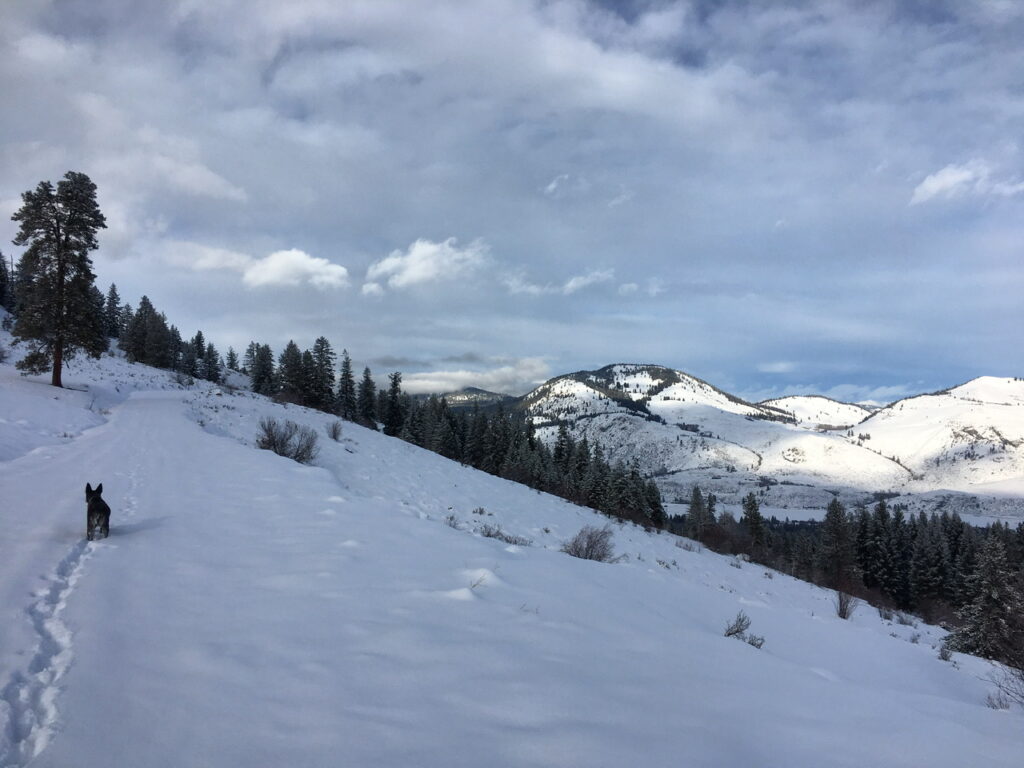
The End. For this year at least….
